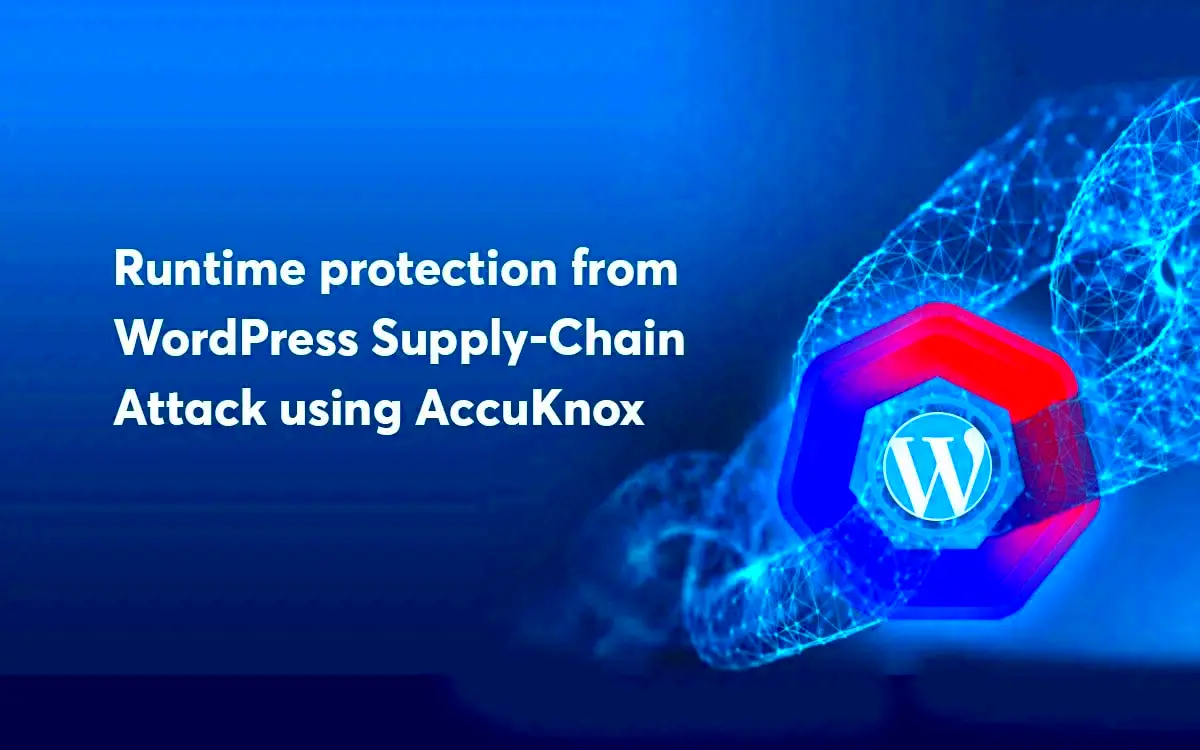Supply Chain Management (SCM) seems like a technical term reserved for business professionals, but it significantly impacts all of us, especially in today’s fast-paced, interconnected world. At its core, SCM is all about managing the flow of goods and services—from manufacturers to consumers. The goal? Make sure that everything runs smoothly, efficiently, and at the right cost. In this blog post, we’ll explore how supply chain dynamics influence various aspects of running a WordPress site, particularly if you’re in e-commerce.
The Intersection of Supply Chain and E-commerce

When you think about running an online store on WordPress, you might focus on website design, SEO, and marketing strategies. However, one crucial element you shouldn’t overlook is the supply chain. Here’s how the two worlds collide:
- Inventory Management: With effective SCM, you can track your products more efficiently. This ensures that you have enough stock to meet customer demands without overshooting and wasting resources.
- Order Fulfillment: The quicker a product can be delivered to a customer after they place an order, the better their shopping experience. Supply chain efficiency directly impacts delivery speed, affecting customer satisfaction and repeat business.
- Cost Control: A streamlined supply chain means lower operational costs, which can be a huge advantage in competitive markets. These savings could be passed on to customers through lower prices.
To highlight this relationship further, here’s a simple table showing how supply chain considerations can directly influence your WordPress e-commerce site:
| Supply Chain Aspect | Impact on WordPress Site |
|---|---|
| Supplier Relationships | Reliable suppliers can enhance product availability, affecting your site’s offerings. |
| Shipping Partners | Efficient shipping options can improve customer satisfaction with faster deliveries. |
| Technology Integration | Using tech tools for inventory and sales can streamline your WordPress operations. |
While a beautiful WordPress site attracts customers, a solid supply chain ensures that those customers leave satisfied. Finding that balance can set you apart in the digital marketplace!
How Supply Chain Efficiency Affects Website Performance

When we talk about supply chain efficiency, we’re really digging into how well products move from point A to point B. But have you ever thought about how this affects your WordPress site? Let’s break it down.
First off, website performance isn’t just about speed; it also dives into user experience, reliability, and content availability. If your supply chain is running like a well-oiled machine, this positively impacts your website in a number of ways:
- Faster Fulfillment: When your orders are processed quickly, it translates to faster deliveries, which keeps your customers happy. Happy customers often lead to positive reviews and repeat business.
- Reduced Downtime: A slick supply chain means fewer unexpected hiccups. If your inventory is well-managed and shipments arrive on time, your site can focus on selling instead of dealing with stock-outs.
- Better Inventory Turnover: Efficient supply chains help in maintaining an optimal inventory level. This means you’re less likely to be stuck with dead stock, which can slow down site performance due to cluttered databases and poor load times.
In summary, there’s a direct link between your supply chain’s efficiency and the performance of your WordPress site. By keeping everything running smoothly behind the scenes, you ensure that your online storefront stays fast, functional, and user-friendly.
The Role of Inventory Management in WordPress Sites

Now, let’s chat about inventory management and its pivotal role in making your WordPress site a success. Think of your inventory as the lifeblood of your e-commerce business. Without it, your site is just a pretty page!
Effective inventory management involves tracking your stock levels, anticipating demand, and making sure that your products are available for your customers when they want them. Here’s why it matters:
- Customer Satisfaction: Imagine visiting a site only to find that your desired item is out of stock. Talk about a letdown! Efficient inventory management helps prevent disappointing your customers.
- Reduced Costs: By keeping a finger on the pulse of your inventory, you can reduce costs associated with overstocking or stockouts. Investing in proper tools, like inventory management plugins for WordPress, can save you time and money.
- Data Insights: Tracking inventory gives you valuable insights into what’s selling well and what’s not. This information can help you make informed decisions about what to promote.
Ultimately, effective inventory management is a cornerstone of a well-functioning WordPress site. It empowers your business to meet customer demands, maintain cost efficiency, and seize market opportunities. So, if you’re serious about your e-commerce venture, setting up strong inventory practices is a must!
Impact of Shipping and Fulfillment on User Experience

When it comes to online shopping, one of the biggest factors affecting user experience is undoubtedly shipping and fulfillment. Imagine this: you’ve just added a bunch of items to your cart, excitedly clicked “checkout,” and then—surprise!—you’re met with crazy shipping fees and a lengthy delivery timeframe. That kind of experience can instantly turn potential buyers into frustrated abandoners.
Here are some ways that shipping and fulfillment impact user experience:
- Delivery Speed: Customers today expect fast shipping. If your WordPress site can’t deliver products quickly, they might look elsewhere.
- Transparent Shipping Costs: If users hit a wall of unexpected costs at checkout, it can be a dealbreaker. Clear and upfront pricing builds trust.
- Order Tracking: Providing a way for customers to track their packages adds a layer of comfort and keeps them engaged with your brand.
- Handling Returns: A streamlined return process boosts confidence in making purchases. Nobody likes a hassle when it comes to returns!
So, how can you ensure that your shipping protocol enhances user experience? Consider offering multiple shipping options, personalized delivery updates, and a simple return policy. Each of these elements can create a positive impression that keeps customers coming back for more.
SEO Considerations Related to Supply Chain Practices
Let’s talk about SEO, shall we? Many people think SEO is all about keywords, backlinks, and meta descriptions. But what they often overlook is how supply chain practices can impact SEO—and it’s more significant than you might think.
Here are some crucial SEO considerations related to supply chain practices:
- Site Speed: If your products are taking too long to ship because of supply chain bottlenecks, this delay can impact how your website performs. A slow-loading site can hurt your search engine rankings.
- Content Freshness: Regularly updating your inventory and product descriptions based on supply chain availability keeps your content relevant, which is a critical factor for SEO.
- User Behavior Signals: If your supply chain leads to frequent stockouts or poor customer service experiences, this can affect user behavior signals, ultimately impacting your site’s SEO performance.
- Local SEO: If you’re a local business, having a well-managed supply chain can lead to faster deliveries—something that can enhance your local search visibility!
In short, while supply chain practices might seem remote from SEO, they are deeply intertwined. Keeping your supply chain efficient not only elevates user experience but also improves your site’s search engine performance, making it a win-win situation!
7. Case Studies: Success Stories of Streamlined Supply Chains
When it comes to the real-world impact of supply chain efficiency, case studies offer some of the best insights. Let’s dive into a couple of compelling examples that showcase how streamlined supply chains have not only improved operational efficiency but also transformed WordPress-based websites.
- Case Study 1: WooCommerce and Efficient Inventory Management
- Case Study 2: Digital Content Delivery and Global Supply Chain
A small e-commerce brand specializing in handmade crafts adopted WooCommerce for their WordPress site. Initially struggling with inventory management and fulfillment, they integrated a third-party supply chain management tool. By automating their inventory tracking and streamlining order fulfillment, the brand reduced its shipping times by 30%. This change led to a significant uptick in customer satisfaction, resulting in a 25% increase in repeat purchases.
A digital marketing agency that utilizes WordPress for client websites found that delays in content delivery were hindering their operations. They formed a partnership with a local supplier that used a cloud-based supply chain system. With real-time reporting and delivery updates, the agency managed to increase its project turnaround times by 40%. This not only improved their client relationships but also allowed them to onboard more clients without sacrificing quality.
In both cases, the integration of efficient supply chain management led to tangible benefits—improved customer satisfaction, increased sales, and enhanced operational efficiency. These success stories demonstrate that a well-managed supply chain can profoundly impact a WordPress site.
8. Best Practices for Integrating Supply Chain Management with WordPress
If you’re looking to optimize your WordPress site through better supply chain management, you’re in the right place! Here are some best practices that can help you seamlessly integrate these two essential components:
- 1. Choose the Right Plugins
- 2. Automate Wherever Possible
- 3. Real-time Data Tracking
- 4. Optimize for Mobile
- 5. Continuous Education and Training
Leverage WordPress plugins designed for supply chain management, like WooCommerce or Shopify integrations. These plugins help manage inventory and orders efficiently.
Manual processes can lead to errors and delays. Implement automation tools for inventory updates, order processing, and notifications to keep your workflow smooth.
Use systems that provide real-time data to monitor stock levels and order statuses. This will help you make quicker decisions and avoid stockouts or overstock situations.
Ensure your WordPress site is mobile-friendly. More consumers are shopping via mobile devices, and having a responsive supply chain ensures a better user experience.
Keep your team updated on the latest supply chain management practices and tools. Regular training can lead to more efficient processes and improved productivity.
By following these best practices, you can create a powerful synergy between your supply chain and WordPress site, leading to smoother operations and happier customers. It’s all about working smarter, not harder!
Does Supply Chain Impact a WordPress Site?
The supply chain is a critical aspect of any e-commerce business, and its impact on a WordPress site can be significant. From inventory management to shipping logistics, various elements of the supply chain can influence the overall performance and user experience of an e-commerce platform. Here are some key points to consider:
- Inventory Management: Efficient inventory management ensures that products are in stock and readily available for customers. An excellent system integrated with a WordPress site can prevent stock shortages and improve customer satisfaction.
- Shipping Speed: The speed at which orders are processed and shipped can greatly affect customer perception. Utilizing effective supply chain strategies can lead to quicker fulfillment and delivery, improving the site’s reputation.
- Cost Management: A well-optimized supply chain helps manage costs effectively, ultimately allowing for competitive pricing without compromising product quality.
- Customer Experience: A streamlined supply chain influences customer experience through order accuracy, timely deliveries, and smooth return processes. Happy customers are more likely to return and recommend the site.
Moreover, integrating supply chain analytics tools with a WordPress site can provide valuable insights. These analytics can help identify bottlenecks in the supply chain, forecast demand, and make informed decisions to enhance overall efficiency.
| Supply Chain Element | Impact on WordPress Site |
|---|---|
| Inventory Management | Prevents stock shortages and boosts customer satisfaction |
| Shipping Speed | Enhances reputation through timely delivery |
| Cost Management | Allows for competitive pricing |
| Customer Experience | Encourages repeat business |
In conclusion, as the landscape of e-commerce continues to evolve, the role of supply chains will become increasingly vital. Companies leveraging optimized supply chain strategies within their WordPress sites will likely see enhanced customer engagement, improved operational efficiency, and ultimately, greater success in the competitive online market. Staying ahead of supply chain challenges and innovations will shape the future of e-commerce.



